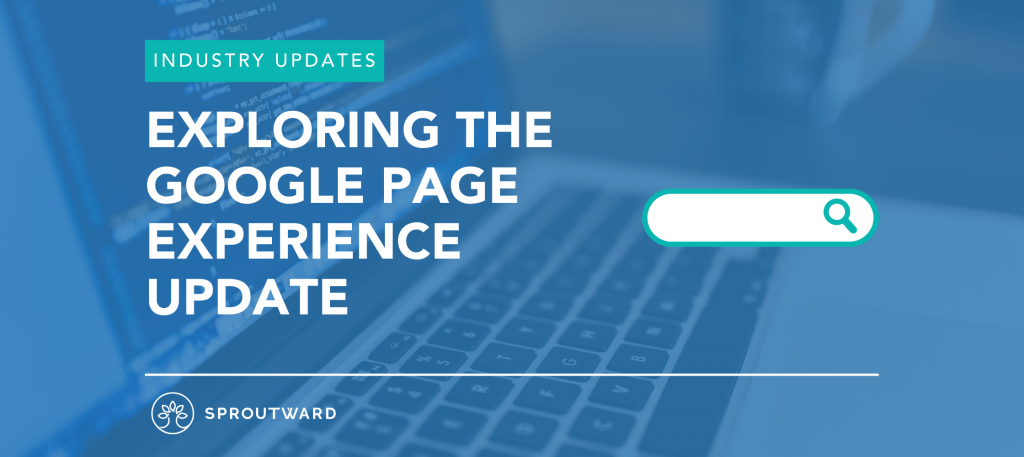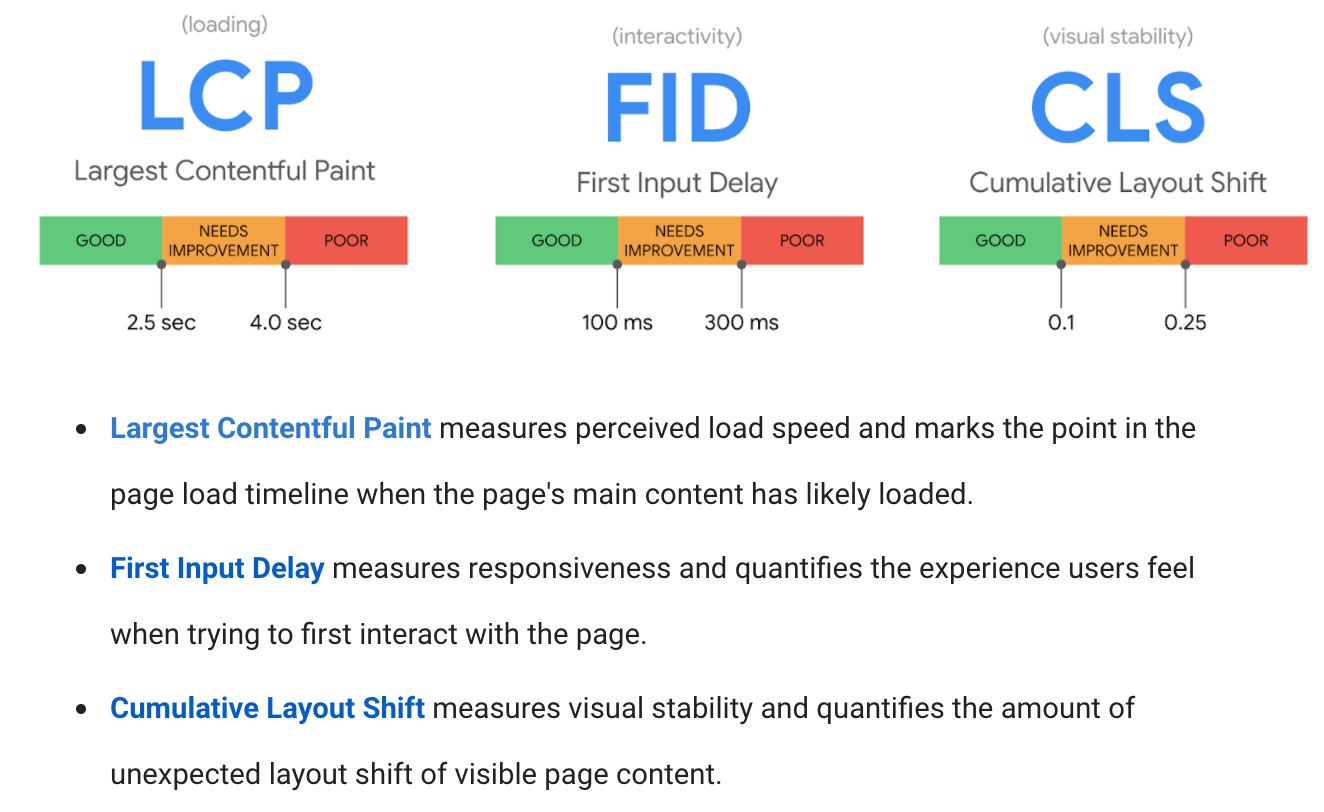Updated 09/22/2020

Background
Google announced that it would be doing a Page Experience Update to its algorithm, increasing focus on Core Web Vital metrics to improve both the search and user experience. Google is a strong advocate for the user experience as sites with a poor experience tend to frustrate the user and lead to multiple searches. While this new update is significant, it is important to understand the fundamentals for Page Experience have not changed. Google expects a fast-loading, mobile-friendly, safe, relevant, and easy to navigate landing environment. The purpose of this update is to put a stronger focus on measuring the impact of these metrics. Google has stated that it is giving at least 6 months’ notice before this will roll out, and it is not expected to happen until 2021. The graphic below outlines how Google is incorporating Core Vitals into existing Search Signals.
Google Search Signals for Page Experience Update

Source: Google
What Are These Core Vital Metrics?
There are three key metrics that Google is looking at. They are all related to how quickly a page loads and how stable that page is when it loads. For example, a page may load very quickly and have a strong Largest Contentful Paint, but then lazy-loaded items cause the page to shift as a user is scrolling. This will cause a negative rating for the Cumulative Layout Shift. It is important to adequately address all three of these metrics in addition to other core metrics, including Mobile Friendliness, Safe Browsing, HTTPS, and No Intrusive Interstitials.

Source: Google
Google Mentions, “we’ll also incorporate the page experience metrics into our ranking criteria for the Top Stories feature in Search on mobile, and remove the AMP requirement from Top Stories eligibility.”
The Top Stories section is related to news articles which most news publications are using Google AMP. Google will still expect faster page speed, and AMP is a method to provide this. The fact that Google is removing the AMP requirement for Top Stories will not change fast pages’ requirements.
What Can My Company Do To Comply?
- While there are still several months before any expected rollout of this algorithm change will happen, it is important to take the right steps to prepare for the updated metrics that Google considers to be important and are currently ranking factors. This includes poor page speed and the mobile interstitial popup. These factors are expected to play a larger role in addition to the heightened focus that Core Vitals will have on-page experience rankings.
- The most important areas of focus include:
- Improving page speed, especially on mobile
- Serve images in a next-gen format that allows better compression with minimal quality loss
- Lazy load images that are off-screen images
- Remove unused Javascript
- Finding an alternative method of email capture that does not hurt the conversion rate and is Google compliant
- Address CLS issues
- Continue to focus on a high-quality mobile experience
- Improve bounce rate on highly abandoned pages
- Improving page speed, especially on mobile
Additional Reading
- Google Webmaster Blog: https://webmasters.googleblog.com/2020/05/evaluating-page-experience.html
- Google Page Insights Tool: https://developers.google.com/speed/pagespeed/insights/